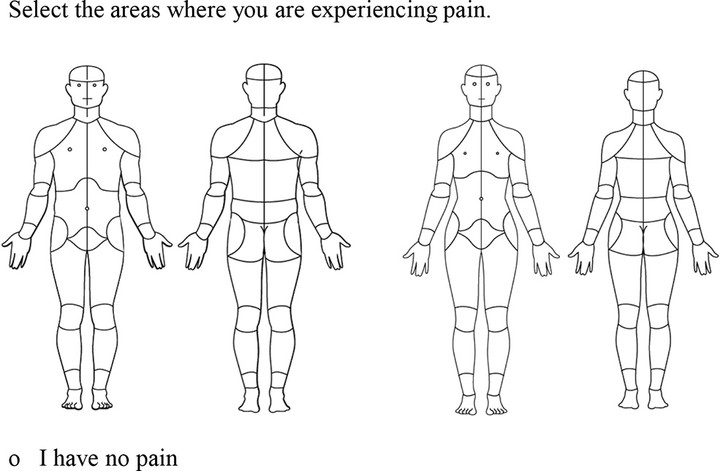Development and validation of the Collaborative Health Outcomes Information Registry body map

Introduction: Critical for the diagnosis and treatment of chronic pain is the anatomical distribution of pain. Several body maps allow patients to indicate pain areas on paper; however, each has its limitations.
Objectives: To provide a comprehensive body map that can be universally applied across pain conditions, we developed the electronic Collaborative Health Outcomes Information Registry (CHOIR) self-report body map by performing an environmental scan and assessing existing body maps.
Methods: After initial validation using a Delphi technique, we compared (1) pain location questionnaire responses of 530 participants with chronic pain with (2) their pain endorsements on the CHOIR body map (CBM) graphic. A subset of participants (n = 278) repeated the survey 1 week later to assess test–retest reliability. Finally, we interviewed a patient cohort from a tertiary pain management clinic (n = 28) to identify reasons for endorsement discordances.
Results: The intraclass correlation coefficient between the total number of body areas endorsed on the survey and those from the body map was 0.86 and improved to 0.93 at follow-up. The intraclass correlation coefficient of the 2 body map graphics separated by 1 week was 0.93. Further examination demonstrated high consistency between the questionnaire and CBM graphic (<10% discordance) in most body areas except for the back and shoulders (≈15–19% discordance). Participants attributed inconsistencies to misinterpretation of body regions and laterality, the latter of which was addressed by modifying the instructions.
Conclusions: Our data suggest that the CBM is a valid and reliable instrument for assessing the distribution of pain.